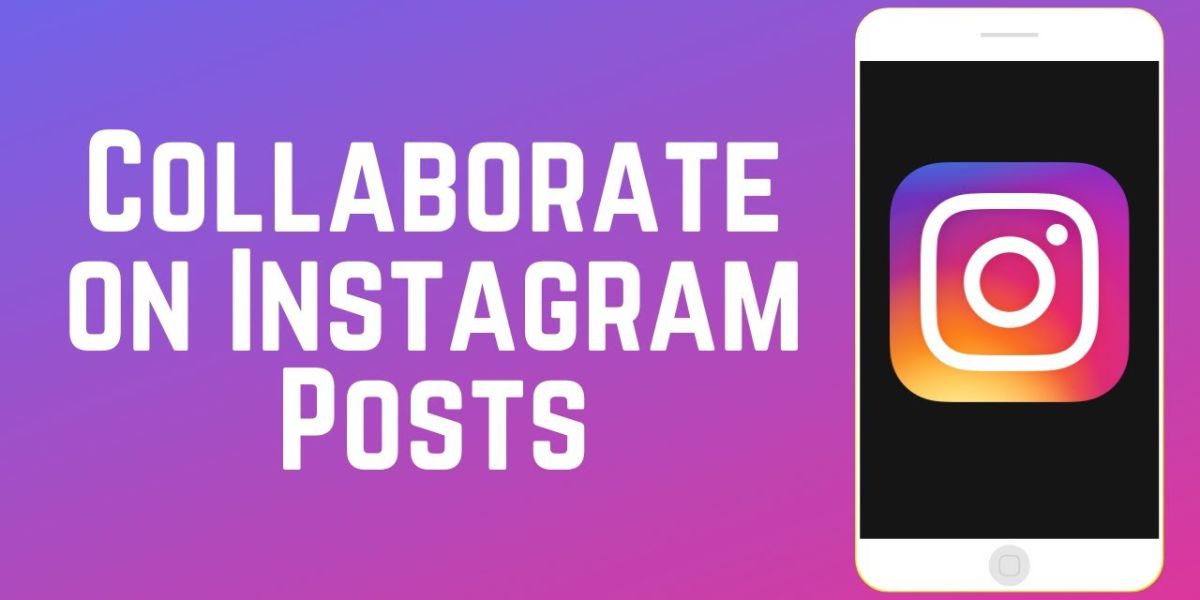Influencer Marketing: Goodbye to days when businesses or brands could only rely on a large number of followers, flashy ads, or traditional marketing methods to boost sales. Today, niche engagement, trust, and authenticity are the new elements in the evolving rich digital world. The influencers marketing world is regularly changing, and brands that stay ahead of the curve are the ones that thrive.
A few years back, influencer marketing was ruled by a handful of niche bloggers or celebrities. But now, it has transformed completely, turning into a diverse landscape with influencers highlighted on every social media site. From micro-influencers to creators with an immense fan base, they each bring different values by establishing genuine connections with their viewers. These connections eventually build trust, shape opinions, and affect buying decisions, making them an effective force for businesses.
To succeed in the dynamic landscape, a strategic and thoughtful approach is important. This comprehensive guide on influencer marketing is your roadmap to creating a helpful influencer marketing strategy, including everything from discovering the right influencers to staying away from common pitfalls and maximizing your campaign’s impact. Let’s quickly check out!
What is Influencer Marketing?
Influencer marketing is a distinctive approach within social media marketing, which includes leveraging endorsements and product suggestions from influential individuals. Such people are known as experts in their niche and have a strong social following.
Influencer marketing has been working successfully due to social influencers establishing maximum credibility among their followers over time. Genuine reviews and recommendations from these individuals work as social proof for potential customers of your business.
Why is Influencer Marketing Important?
Influencer marketing has developed as one of the most influential methods for businesses or brands to connect with their potential consumers and drive sales. Brands across industries are collaborating with influencers to display their items and establish trust with the audience.
With the influencer marketing world projected to reach $24 billion in the year 2024, it is good to say that influencer marketing is beyond just a trend, it’s truly a game changer. Brands must approach influencers for their marketing strategies. Are you still confused about whether to add influencers to your strategy or not? Here are some notable benefits of influencer marketing:
- Effective Audience Targeting
Influencer marketing lets brands reach out to their relevant audience through collaborations with social influencers whose following count matches the brand’s target demographic.
Not only does this ensure that the message is seen by the ideal people, but also it is sent in a way that feels genuine and relevant, multiplying the impact of the campaign.
- Enhanced brand awareness
Partnering with a social media influencer attracts a broader audience to your business. With influencers featuring your business in their content, it will reach new people who might not have known about it.
Also, connecting credible individuals with your fans enhances the credibility and reputation of your business and increases market awareness.
- Creating authenticity and trust
Influencers establish strong relationships with their audience by sharing real-life experiences and relevant stories. Their authenticity makes them stand out, unlike traditional ads, since their content feels unscripted and natural. By openly disclosing brand partnerships and endorsing items they actually believe in, they increase their credibility.
Moreover, their active connection with fans through direct interactions, comments, and responses individually makes their fans feel understood and appreciated. This trust-driven bond not only strengthens loyalty but also turns into higher conversion rates for the businesses they market.
- Boosted conversions
Social proof plays an essential role in impacting buying decisions, as shoppers are more likely to shop after going through positive feedback from social influencers. By presenting real experiences, influencers can move undecided buyers toward your business. Plus, interactive content such as challenges, giveaways, and live sessions increases engagement, resulting in instant actions like signing up or purchasing for promotions.
Influencers sometimes offer special discount codes and offers, making it simple to measure conversions directly associated with their campaigns. For instance, influencer marketing examples like Chiara Ferragni marketing a new line of shoes, which can drastically lean followers who trust her recommendations, increasing more sales.
Strategies for Effective Influencer Marketing
As with other marketing strategies, influencer marketing strategy demands considerate planning. Below are important elements to keep in mind while you create your strategy for successful influence marketing!
1. Identify the ideal influencers and understand their compensation models
Opting for a suitable influencer is the primary step toward an effective marketing campaign. To get started, conduct market research to define your target people and their needs. Next, choose the most effective and popular social site for your collaboration. It’s crucial to make sure that different sites draw different demographics.
For example, beauty and fashion brands generally grow on platforms like YouTube and Instagram, while gaming companies may have more success on Twitch. Furthermore, understanding an influencer’s payment structure, whether it is commission-based, flat fee, or product exchange, will help businesses plan their budget effectively.
When looking for influencers, you should consider the following aspects:
- Is the social influencer aligned with your business?
Make sure their content showcases topics and values related to your items or services.
- Is their fan base genuine?
Evaluate their profile thoroughly. Seek out regular engagement, a healthy ratio of likes to audience, and meaningful comments. Stay away from accounts with doubtfully low engagement or spam-like interactions since these might have fake followers.
- Do they have related experience?
Make sure whether or not they have a partnership with a brand like yours. Influencers who have a knack for understanding and years of experience sometimes have a media kit or relevant portfolio reflecting their previous outcomes, giving you information about their potential impact, as well as professionalism.
Speaking of compensation, it depends upon the influencer type, platform, and collaboration style. Therefore, you’re advised to consider the ROI when planning your campaign.
2. Plan your budget and implementation strategy
This is one of the important influencer marketing tactics for successful influencer collaborations. Distribute funds smartly, prioritizing high-influence collaborations, and remember to element in the time needed for campaign planning, implementation, and evaluation.
Most often, influencer marketing necessitates hands-on coordination, as influencers balance several commitments. If feasible, consider launching a brand ambassador program to expand your content strategy.
For instance, Lululemon collaborates with ambassadors to market their activewear, mixing authentic testimonials with product visibility to boost engagement. Moreover, investing in influencer marketing software can simplify the process. These tools help discover the right influencers, manage payments and contracts, and ensure content matches your goals, all in one spot.
3. Set Campaign Objectives and Create Clear Messaging
Define clear goals for your influencer campaign to guide its direction. Whether you’re looking to introduce a new product, increase your fan base, or drive brand awareness, it is important to have a defined objective. It ensures measurable and focused results.
The campaign’s messaging is equally important. As influencers produce personal and relevant content, work with them to maintain their personal style while ensuring the message matches your business’ identity. Creating the right balance between brand consistency and creative freedom is vital to crafting effective campaigns.
4. Create an Influencer Outreach Plan
The way you approach social influencers is based on their type. Macro influencers and celebrities usually partner through management agencies. Therefore, you’re advised to reach out to them through their representatives. On the other hand, nano and micro-influencers are usually more accessible, with contact information available on their social media sites or bios.
In our opinion, you should create a personalized pitch, focusing on your brand, campaign idea, and the value they will get from collaborating with you. Customizing your outreach demonstrates genuine interest and increases the likelihood of a favorable response.
5. Assess and Optimize Your Strategy
Another important strategy influencer marketing tip for your collaboration is monitoring the campaign’s performance and identifying areas for improvement. Create clear benchmarks to track success, which include click-throughs, engagement rates, or conversions. Checking in regularly during campaigns can help brands resolve issues in no time and improve their approach.
Note that each campaign is a learning experience. Use the insights from past efforts to optimize your strategies, ensuring greater impact with future partnerships. Stay updated on new platforms and ways to improve your campaigns, so your influencer marketing stays effective and fresh.
Types of Influencer Marketing
Allying with an influencer with millions of followers might seem ideal, but they may not always align with your business. While some influencers cater to wider audiences, others engage tinnier, more niche communities. Knowing the trade-offs, between cost, reach, and engagement is important for choosing the right fit. Let’s take a deep dive into the various types of influencers:
| Type of Influencer | Follower Range | Characteristics | Benefits | Costs | Ideal for |
| Mega/Celebrity Influencers | Over 1 Million | Renowned public figures, such as musicians, actors, athletes, and others with a diverse fan base |
|
Extremely high |
|
| Macro-Influencers | 100,000 to 1 Million | Well-known personalities and thought leaders in their field |
|
Comparatively high, but lower than mega influencers |
|
| Micro-Influencers | 10,000 to 100,000 | Having a strong presence on sites like IG, YT, and TikTok |
|
Even more budget-friendly than larger influencers |
|
| Nano-Influencers | 1,000 to 10,000 | Strong connection with a close-knit community |
|
Much affordable for niche products or small businesses |
|
Advantages and Disadvantages of Influencer Marketing
While influencer marketing has several benefits, it may be not effective for some brands. Here is a breakdown of its advantages and disadvantages in the given section:
Advantages of Influencer Marketing:
- Ensures reliable endorsements to boost brand awareness.
- Produce premium content at budget-friendly prices, unlike in-house content creation.
- Help target potential consumers or niches effortlessly.
- Offers social proof to encourage a targeted audience to take action.
- Help increase high engagement rates.
Disadvantages of Influencer Marketing:
- Can be pricey if you’re planning to collaborate with mega or macro influencers.
- Can be difficult to evaluate campaign performance.
- Has the possibility of fraudulent influencer actions and fake followers.
- Has some legal and ethical considerations regarding collaborating transparency and avoiding misleading claims.
- Might be difficult to discover the best-fit influencers.
Top Influencer Marketing Platforms 2025
Influencer marketing websites or software help brands produce an influencer marketing strategy. These tools can help brands that are just stepping into the influencer marketing landscape, brands with smaller groups that need more assistance, or even larger corporations that just want to hand their strategy over to the experts.
Whether you’re launching your first influencer marketing campaign or aiming to ease the process for your team, here are top influencer marketing sites that can simplify your influencer marketing efforts.
- Haulpack
- Upfluence
- GRIN
- Influence
- Later Influence
- Influencer marketing hub
- Grynow
- Brandwatch
- Find new influencers
- YouTube BrandConnect
- Skeepers, etc.
Difference between Influencer Marketing and Affiliate Marketing
If you want to establish brand credibility and increase awareness, then influencer marketing is a great choice. On the other hand, affiliate marketing works well if you want to see rapid revenue growth. However, in both strategies, you’ll need to cultivate the channel.
Now, let’s discuss the key difference between these two marketing services.
- Collaboration Dynamics – In affiliate marketing, your partners are primarily media outlets, online publishers, and other digital marketplaces where your ads are featured. On the other side, Influencer marketing extremely focuses on cultivating direct bonds with individuals like bloggers, YouTubers, and social influencers.
- Outreach Approach – Affiliate marketing enables the brand to quickly engage with a large pool of potential affiliates, while influencer marketing usually includes customized, one-on-one interactions.
- Performance tracking – Affiliate marketing provides simple tracking and precise ROI measurement for a sole campaign. Contrary, influencer marketing is less focused on instant, granular performance metrics. Due to this reason, it is suitable for long-term brand-building initiatives.
How to Build an Influencer Marketing Campaign
The usual process of how to build an influencer marketing campaign can be wrapped up in the following steps:
Step 1 Define your goals & influencer marketing strategy
Step 2 Determine the type of campaign you’ll build (sponsored posts, giveaways, unboxing and product gifting, product partnerships, seasonal campaigns, affiliate marketing, or brand ambassador campaigns).
Step 3 Find influencers and hire them for your campaign.
Step 4 Prepare briefs and contracts.
Step 5 Allow your social influencers to prepare content.
Step 6 Content is posted and improved across several channels.
Step 7 Track the outcomes of your campaign.
List of successful Influencer marketing examples:
- Topicals
- La Roche-Posay
- Joybird
- Flock Freight
- Gymshark
- Dunkin’
Key Performance Indicators (KPIs) for Measuring Success
In influencer marketing, KPIs or Key Performance Indicators for assessing success include ROI, engagement rate, brand awareness, impressions, reach, conversions, and campaign click-through rate.
- Engagement Rate:
Evaluate how much followers engage with an influencer’s content. A higher engagement rate showcases that followers enjoy and trust the content.
- ROI:
Compares the revenue generated from a campaign to the overall cost. Check the overall success and profitability of the campaign. If you’re wondering how to track influencer marketing ROI, you can utilize a blend of qualitative and quantitative metrics.
- Brand Awareness:
This is a common objective in influencer marketing campaigns. Partnerships with influencers enable businesses to be noticed by their audience.
- Impressions:
How many times the content is viewed, with or without engagement?
- Conversions:
The users count who takes a favorable action after interacting with an influencer’s content.
- Reach:
The overall number of people who come across content. High reach showcases wider exposure, which helps increase brand awareness.
- Campaign Click-through Rate or CTR:
Evaluate how often potential clients engage with a link given in a post.
The Role of Social Media in Influencer Marketing
Social media plays a crucial role in impacting influencer marketing, changing the digital world in many ways:
1. Building Trust:
Influencers foster genuine connections with their fans, which increases the credibility of their suggestions. This trust makes influencer endorsements more relatable and impactful.
2. Increasing Brand Visibility:
There are several platforms like TikTok, YouTube, and Instagram, which provide access to huge audiences. And this is how brands can improve their presence by collaborating with influencers who match their values.
3. Producing Engaging Content:
The social platform’s interactive nature and visual enables social influencers to create appealing content that connects with their audience, eventually expanding shareability and engagement.
4. Increasing Sales:
Social media influencers usually utilize affiliate URLs or discount codes to assess and increase conversions, thereby increasing sales and boosting traffic for businesses.
5. Leveraging Insights:
Social media platforms offer useful analytics that help businesses optimize their strategies, understand audience needs, and track engagement. Due to this, future campaigns will be optimized.
FAQs
- How to track influencer marketing?
You can track influencer marketing by going through the steps below:
- Define your goals.
- Track your audience growth.
- Keep an eye on click-through rates or CTRs.
- Utilize unique coupon codes.
- Evaluate engagement metrics.
- Analyze conversion rates.
- Measure ROI.
- Where to start influencer marketing?
Following the steps below to start influencer marketing:
- Choose the right influencer
- Understand your niche.
- Choose your channels.
- Create and post unique content.
- Reach out to influencers.
- Be authentic.
- Consider the Relevance, Reach, and Resonance.
- What are influencer marketing platforms?
Influencer marketing platforms are tools/software that help generate influencer marketing strategies. They enable brands to find and collaborate with influencers to market their products or services. Plus, they might help them track analytics and manage their campaigns. The best influencer marketing tools are NeoReach, GRIN, Klear, and Upfluence.
- How does influencer marketing work?
Influencer marketing means forming a marketing strategy, including partnering with social media influencers to market a business’s products or services through various methods. These include item reviews, sponsored posts, and endorsements. It operates by leveraging the credibility and trust established by influencers with their fans.
- How to start influencer marketing?
Anyone can start influencer marketing by defining their goals, finding potential influencers, and contacting them. You can also take benefit of influencer marketing tools to help you seek out influencers and establish relationships with them.
- Why is influencer marketing important?
Influencer marketing has its pros. Not only can it help one drive more sales and boost brand awareness, but it can also help them reach niche audiences, avoid ad blockers, increase SEO, and a lot more. Plus, unlike traditional marketing, influencer marketing has cost less and higher engagement rates.
- How much does influencer marketing cost?
It depends upon the brand, the influencer you pick, and the campaign. Depending on the type of content and the platform, the cost may vary. However, it can range from $1,000 for a simple campaign to $400,000 or more for a bigger, more comprehensive campaign.
Conclusion
In a nutshell, social media influencers are indeed the new wave in marketing. Although influencer marketing continues to evolve, the trends and strategies we come across today may drastically vary in the coming years.
While influencer marketing has its distinctive elements, the process of creating a campaign follows the same basic steps as any other marketing initiative, including conducting research, setting a budget, understanding your goals, finding the right influencers, and refining your strategy as required. Once you understand the process, forming tailored influencer campaigns to fulfill your brand’s diverse needs will be like second nature.
On this page, we have provided you with all the required information and methods to start your influencer marketing journey. It’s good to find potential influencers using influencer marketing platforms and tools we’ve listed. Don’t forget to evaluate the campaign’s performance from time to time. Are you just starting? You can try free tools to save additional costs.






